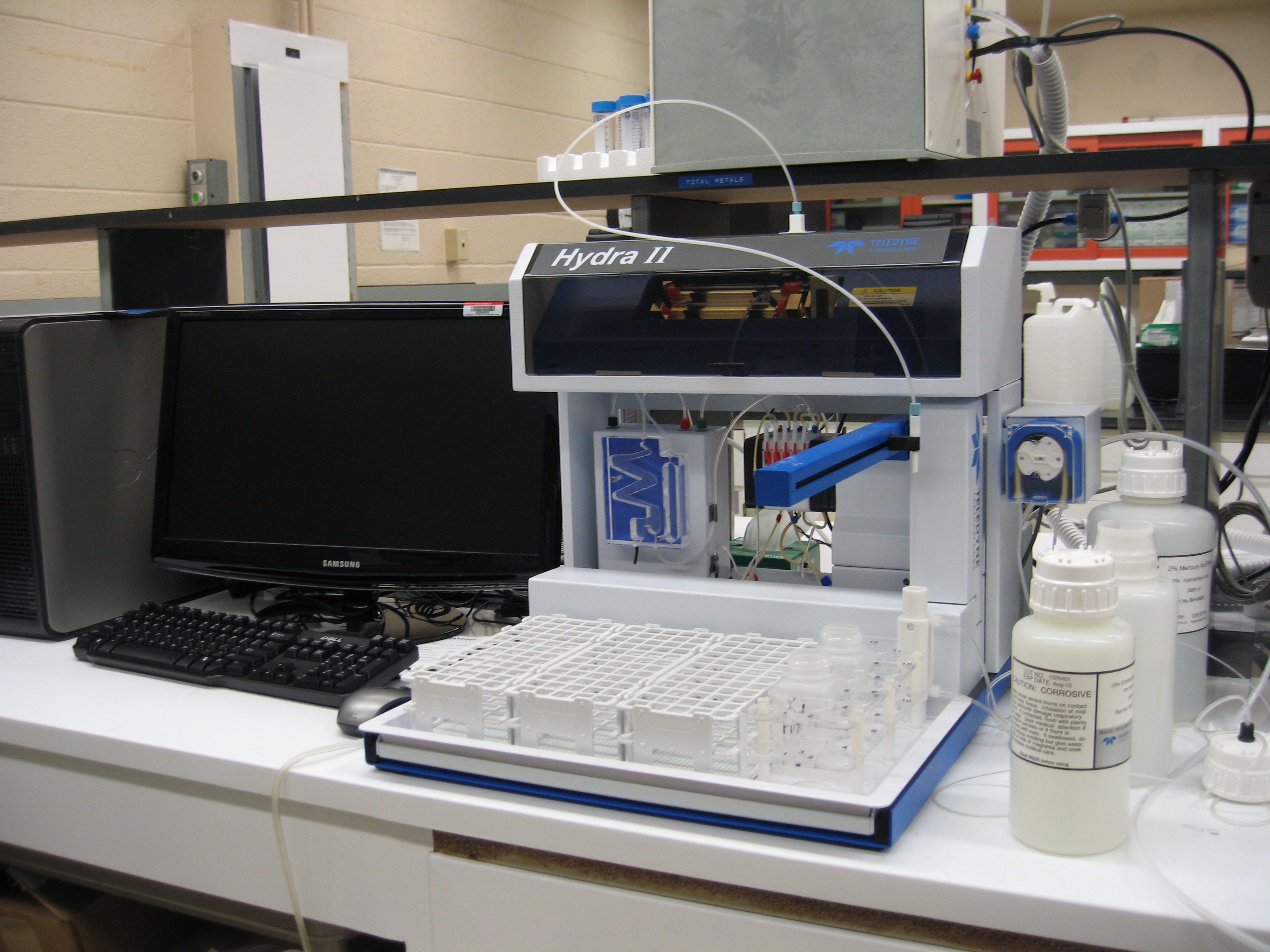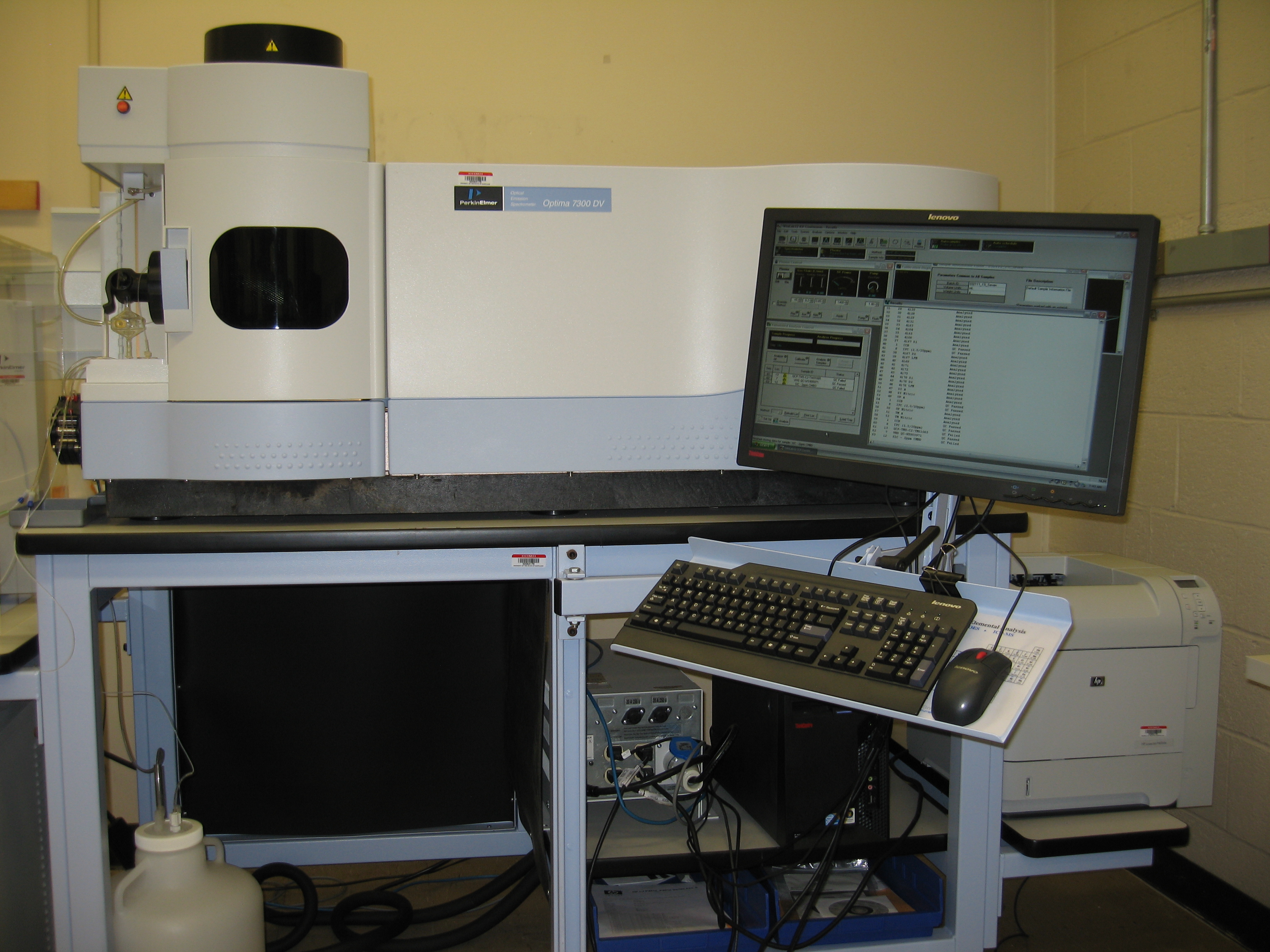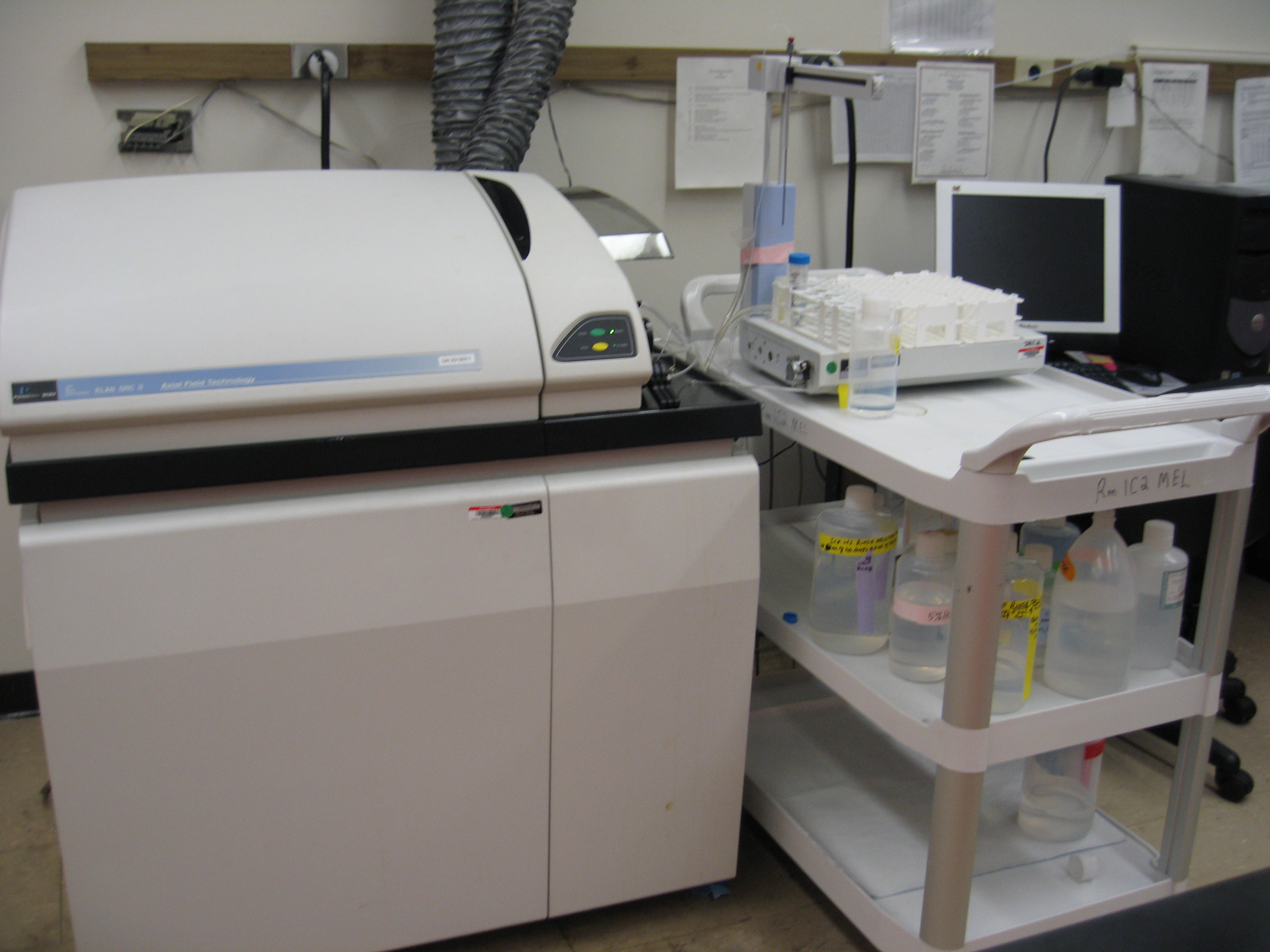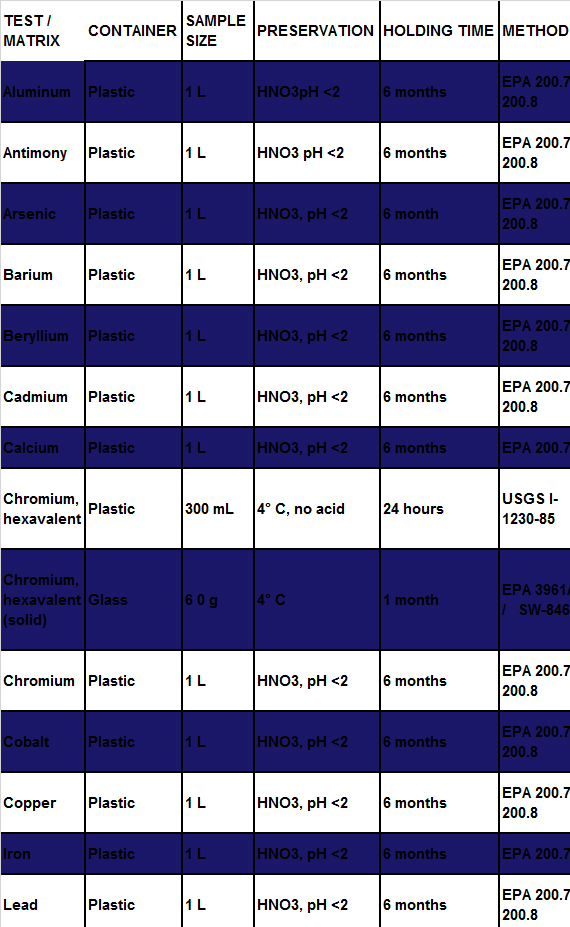Purpose
The Environmental Metals Section and the Bioanalytical Metals Section, units of the Metals Laboratory, perform the analyses of trace metals in drinking water, wastewater, sediments, sludge, foods, aquatic tissues, consumer products, blood, urine, and serum in support of federal and state programs and regulations, such as MDE’s Water Quality Monitoring Program, Clean Water Act, Safe Drinking Water Act, Resource Conservation and Recovery Act, Superfund, and in response to CDC’s Chemical Emergency Preparedness and Response Program.
Instrumentation
- Inductively Coupled Plasma-Optical Emission Spectrometer (ICP-OES)
- Inductively Coupled Plasma-Mass Spectrometer (ICP-MS)
Mercury Analyzer
- Spectrophotometer – USGS I-1230-85
Mercury Analyzer
The mercury analyzer is used to determine trace mercury levels in a wide range of non-drinking water samples and drinking water samples with a tubidity less than 1 NTU.
ICP-OES 
The ICP_OES is an inductively coupled plasma optical emission spectrometry, also referred to as inductively coupled plasma atomic emission spectroscopy (ICP-AES). The instrument id used for the detection of trace metals. It is a type of emission spectroscopy that uses the inductively coupled plasma to produce excited atoms and ions that emit electromagnetic radiation at wavelengths characteristic of a particular element. The intensity of this emission is indicative of the concentration of the element within the sample.
ICP-MS 
The ICP_MS is an inductively coupled plasma mass spectrometry. It is a type of mass spectrometry which is capable of detecting metals and several non-metals at concentrations as low as one part in 1012 (part per trillion). This is achieved by ionizing the sample with inductively coupled plasma and then using a mass spectrometer to separate and quantify those ions.
Elements Routinely Analyzed
Tests are performed using a variety of wet chemistry instrumentations. Testing techniques covered in this section include:

Proper measurement techniques, calibration, verification, and troubleshooting strategies for each parameter are addressed and good laboratory practices are emphasized.
Potential Health Concerns and Environmental Concerns
Chemical analyses determine the suitability of drinking water for human consumption, effectiveness of wastewater treatment systems, and the quality of the Chesapeake Bay and its tributary waters. It also analyzes samples suspected of having toxic or hazardous effects.

